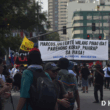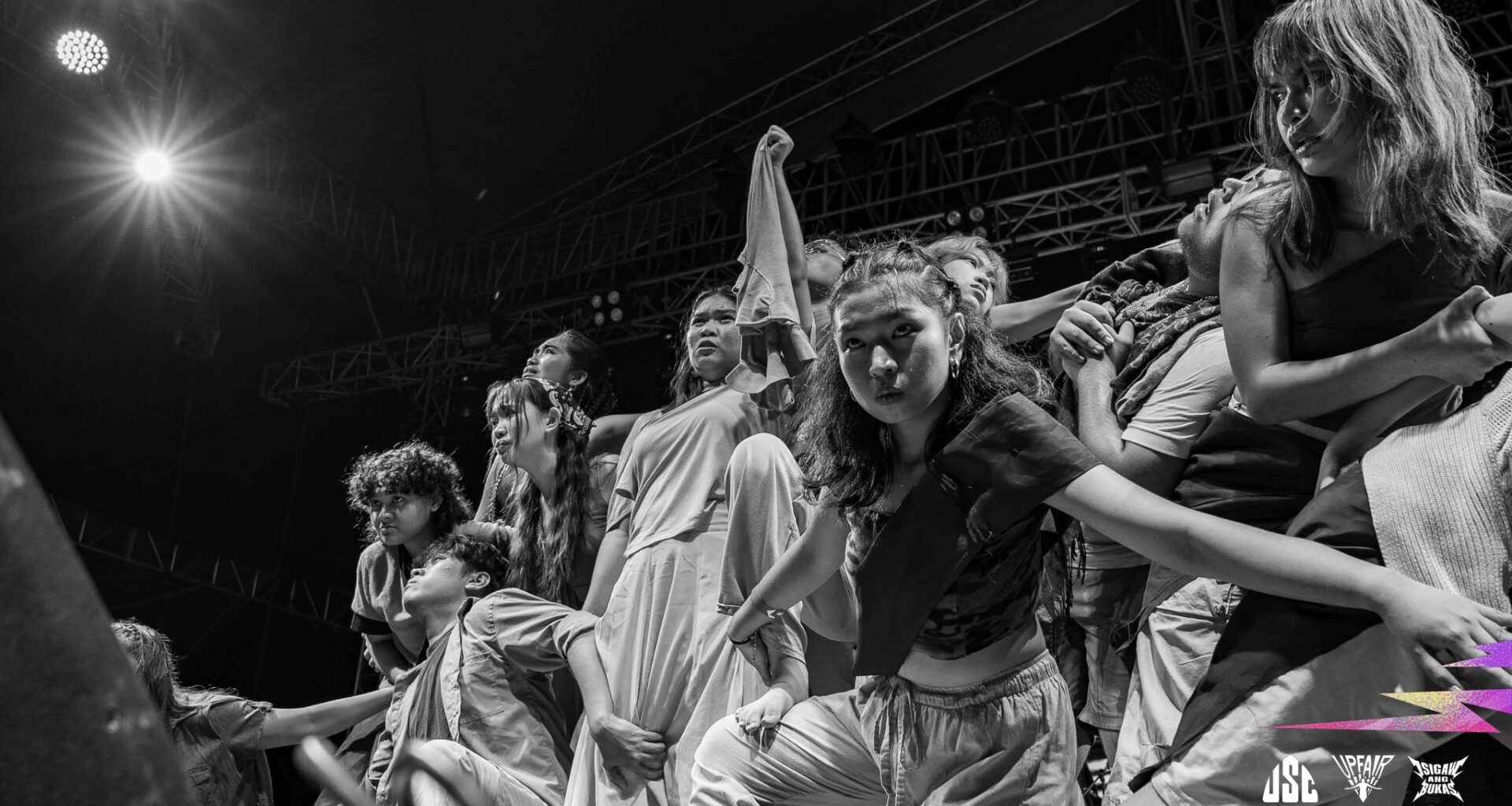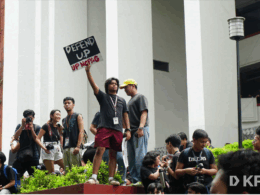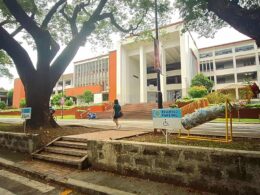Since the 1980s, the UP Fair has always banked on its political, progressive, advocacy-driven roots where protest and music collided.
It has since amplified campaigns across sectors such as safe and inclusive spaces, human rights, accessible education, and environmental conservation, each night dedicated to a different cause. It has also featured various celebrities, performers, and OPM artists, with some even owing their popularity after their stint at the fair.
But its striking contradiction on the ground is appalling. Over the past few years, its genuine meaning and social relevance as a political protest has notably waned.
Maybe commercialization is to blame. And it’s not just about the ₱50 ticket price hike within the past couple of years, or the ₱500 to ₱1000 budget a fairgoer needs to buy food and enjoy the carnival rides just for a single fair night.
Even just a quick glance at the booth layout reveals who the UP Fair really caters to.
This year, major sponsors and brands occupied the 30 booths right behind the concert grounds. Only 15 were allotted to advocacy partners and UP organizations in the next row.
Most of the remaining booths were given to concessionaires, mostly small-to-medium businesses and partner communities such as Palestinian refugees who were given a chance to set up shop.
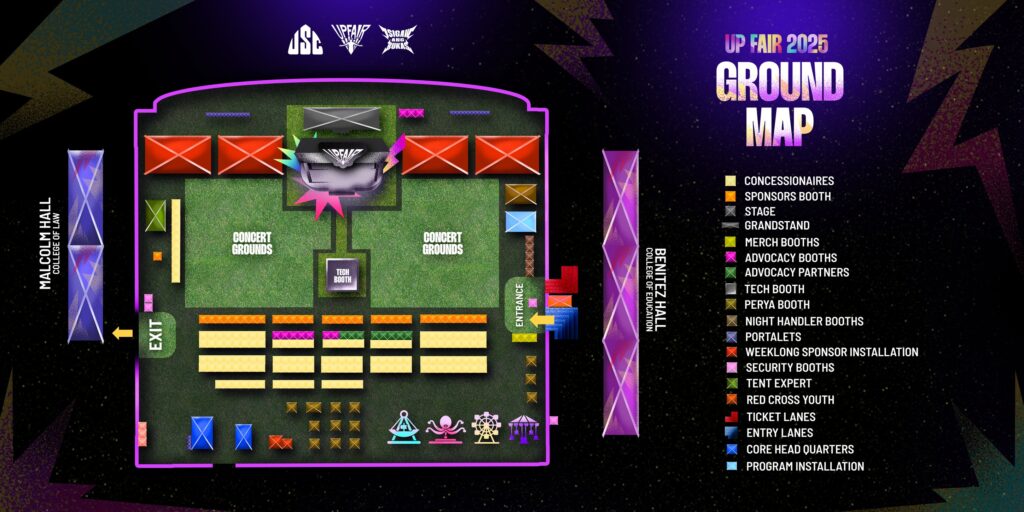
Last year’s UP Fair layout was also quite similar with this year’s run, with nine marked concessionaire booths from the UP community.

Since the UP Fair also doubles as an income-generating project, organizations handling each concert night are guaranteed of their right to raise funds. But it should not override the fair’s primary goal of championing social justice.
As corporate partners continue to receive greater priority, profiteering will overshadow and undermine genuine advocacy.
This vacillation translates to tokenistic gestures towards marginalized groups, their continued struggles, and their campaigns. Note that a few minutes of space for on-stage protests and advocacy speakers can only do so much if they cannot effectively amplify their calls beyond their stage appearance.
Maybe the artists and fairgoers should not be spared from the blame either.
An artist named Haring Manggi Miguelito Malakas performed “Lupaypay”, a “lewd and sexist” song about heterosexual intercourse during Kalye Tunes on Wednesday. One of my friends from the organizing team that night found the song sexually violent and trauma-inducing.
Ironically, this happened right before Quests, the concert night that bannered women and gender issues.
Three days later, a REV attendee shared a post on how they witnessed some attendees either trivialize or grow tired of listening to the campaigns of Manila Bay fisherfolk affected by ongoing reclamation efforts.
“It’s saddening (for me) because at the core of UP Fair are the calls,” the netizen wrote in Filipino, noting that the event is a political protest. “I hope we didn’t go to the fair for the artists since they are just part of what is truly being fought for.”
A couple of artists on the same night were also under fire. Maki was heard shouting a question in Filipino along the lines of, “Aren’t we here to party?”
Gloc-9, meanwhile, drew flak on social media when his management requested to take down the stage banner that screamed “Marcos singilin, Duterte panagutin!” before performing on stage, a floor manager told Philippine Collegian.
While these cases are not unique to the UP Fair, it’s not productive to remind people of what should have been the obvious. UP students most likely know that it is a political act, but outsiders may not share the same concept of what the UP Fair is all about.
Do the advocacies bode well or resonate with them? How were they even marketed to prospect attendees? Do bourgeois tendencies, mainstream trends, social apathy, or systemic alienation influence public perception of such causes?
The fair’s cultural reorientation away from commercial and capital interests has never been this urgent. In hindsight, maybe we should collectively share the blame for (un)consciously letting all of this happen on our watch.
Most of UP Fair’s existential issues stem from mismanagement and lack of ample grounding on its essence as a political protest, not as a mere performative spectacle for a quick cash grab.
Reassessing how artists are selected and informed of the calls they need to bring attention on the stage requires nighthandlers to willingly let go of marketability and the performers’ capacity to draw in swathes of diehard fanatics with spending power.
Similar considerations should also apply to balancing the number of advocacy partners and corporate sponsors. These factors would tangibly depict the fair’s clear priority and focus on highlighting political and social relevance over raking in profits.
UP Fair’s marketing team should also take their pre-event campaign activities up a notch. Advocacy messaging should sustain its momentum before culminating in the week-long concert. This will serve as a crucial reminder of its goal to serve as a platform for shedding light on sectors and social issues.
Its much-needed return to its original orientation might eventually involve reimagining its purpose not as a fundraising activity, but as a modern-day political protest without doing away with the fair’s historically militant spirit. Some of my friends who have gone to the February Fair at UP Los Baños noted a stark difference on how their concert nights, free of barricades and charges, had heavier emphasis on protests than feel-good performances with little to no political substance.
After all, resistance can only dance, sing, and take up the stage by storm if we’re grounded in what we’re really fighting for in the first place.
For comments and feedback, please send him an email at cpdejesus3@up.edu.ph.




